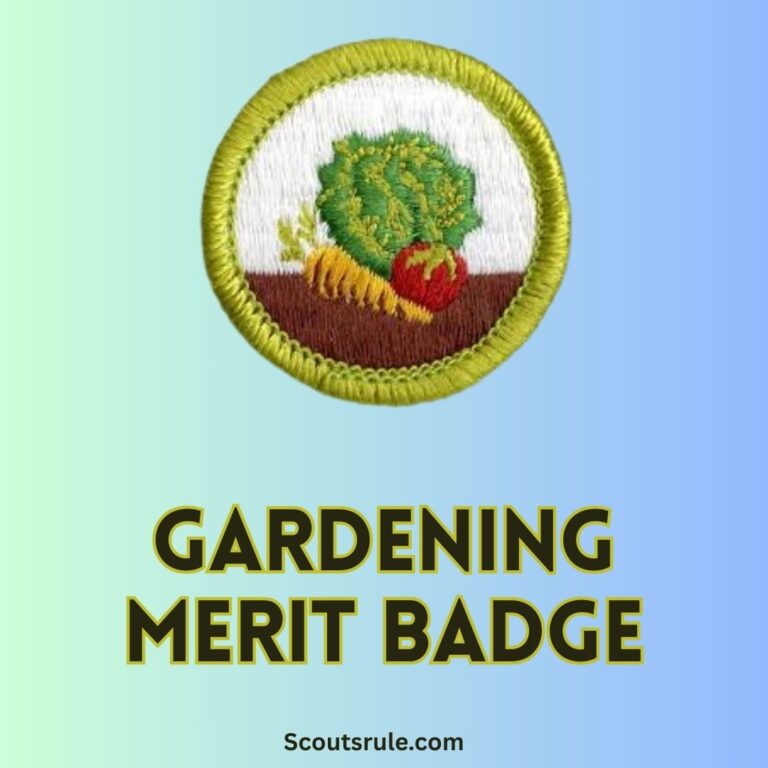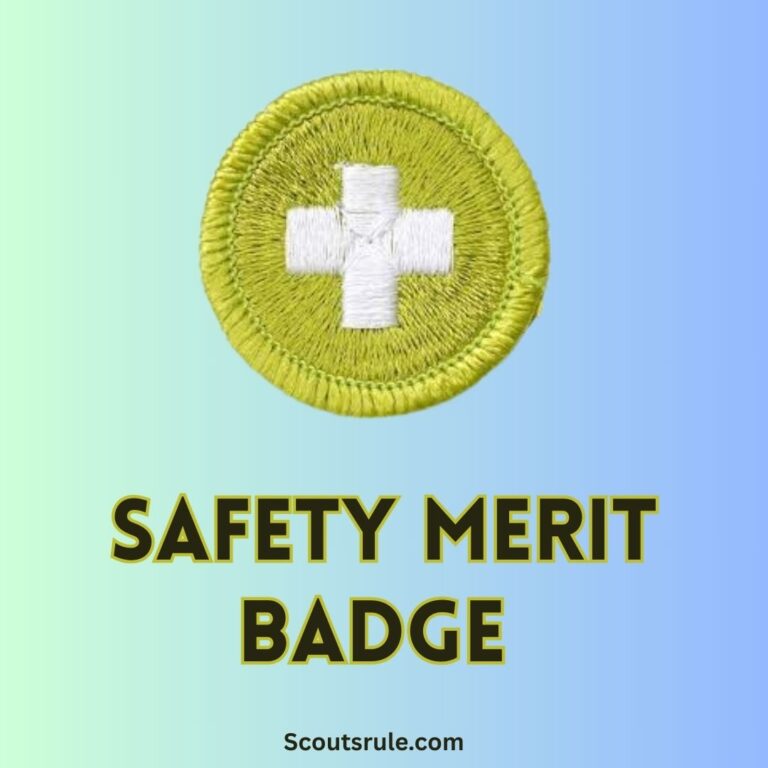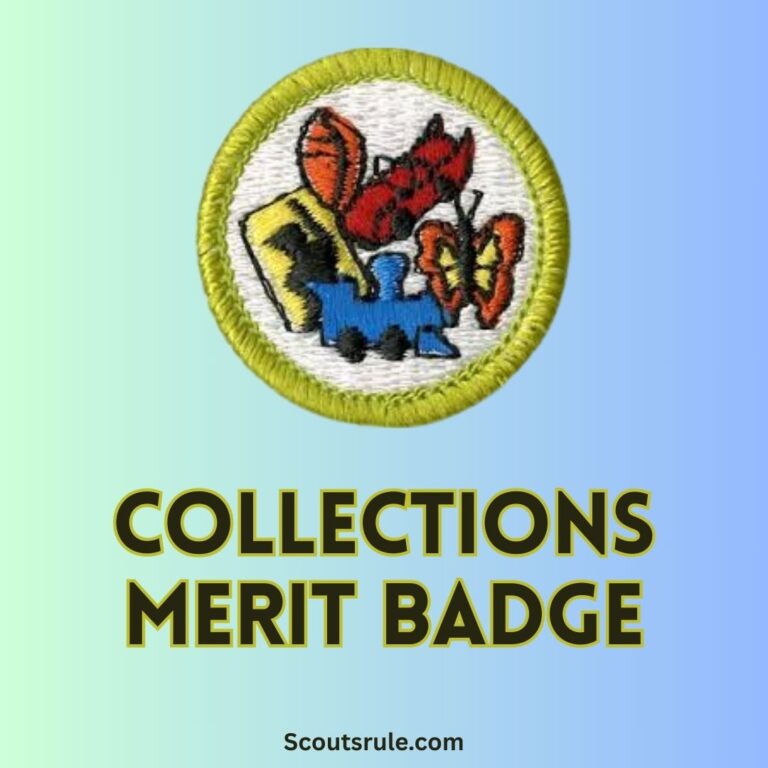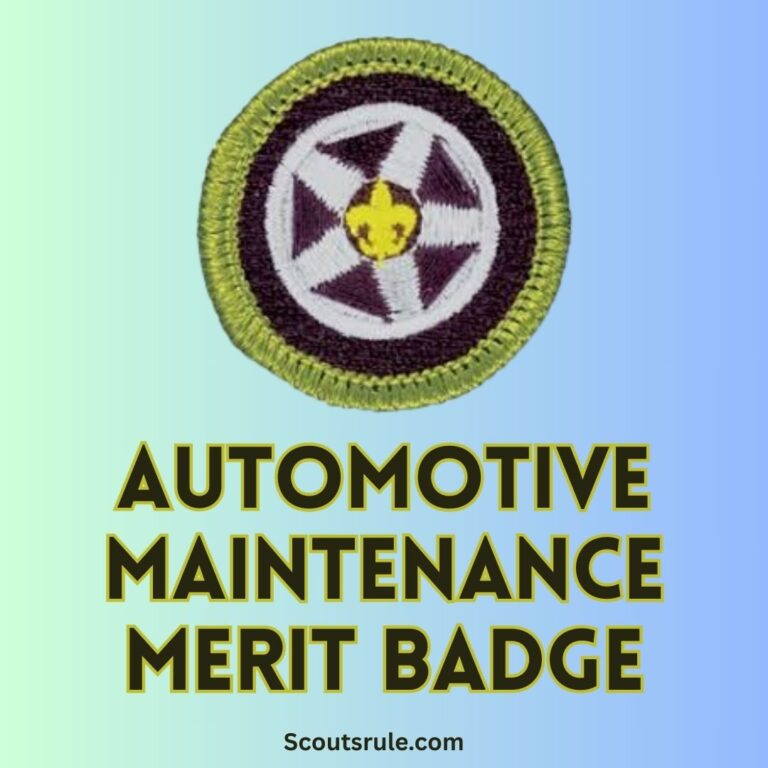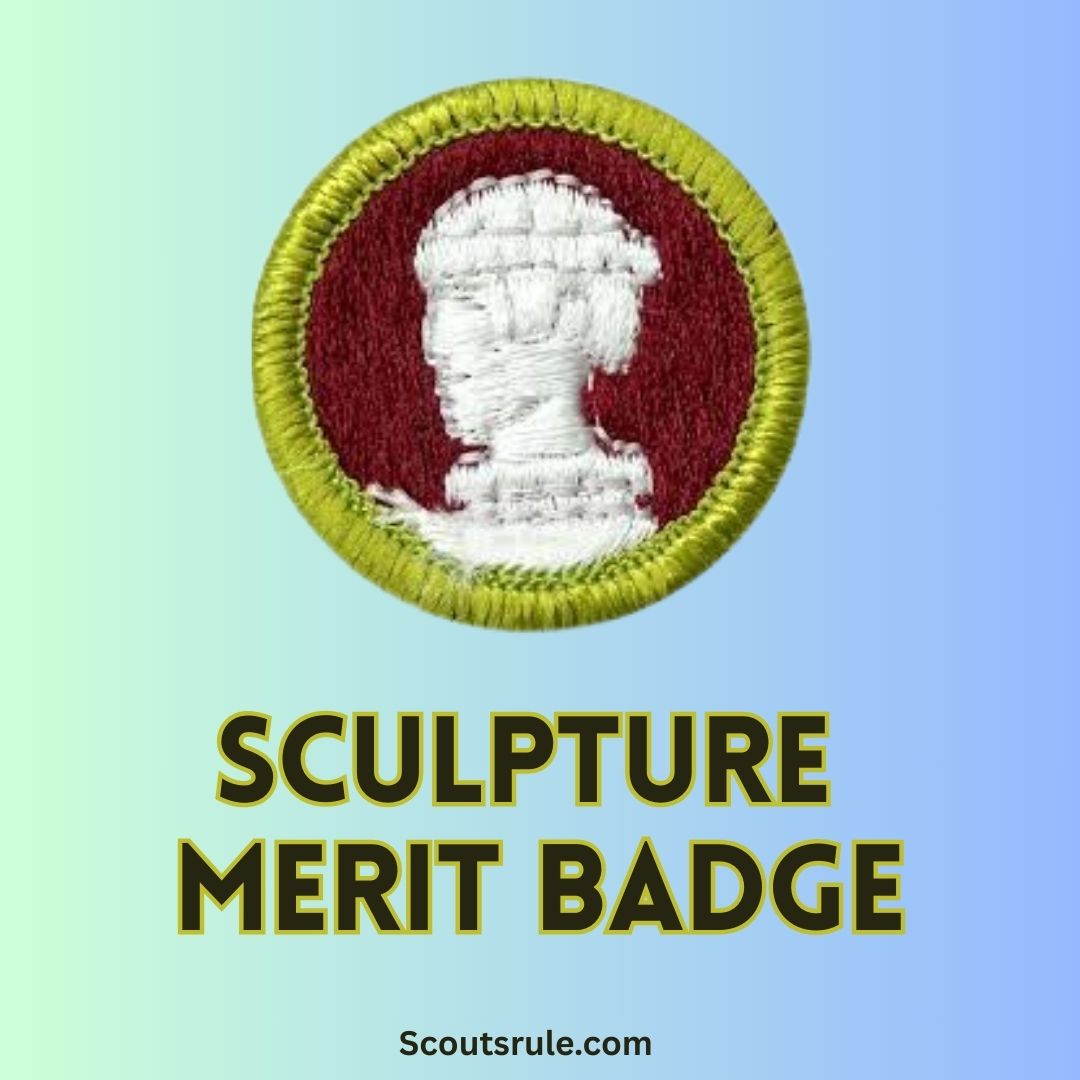
Sculpture is among the oldest and most diverse forms of expression in the art world. From ancient carvings in stone to contemporary installations made of mixed media, sculptures capture the imagination and convey messages that transcend language. The Sculpture Merit Badge challenges Scouts to explore not only the hands-on techniques of sculpting but also the broader cultural and historical importance of three-dimensional art. By engaging in this merit badge, Scouts are encouraged to learn about proper tool usage, safety guidelines, creative experimentation, and the impact of visual art on society.
Post Contents
1. Overview
This badge is both an artistic and technical endeavor. It calls upon you to become familiar with traditional sculpting methods, to experiment with different media, and to reflect on how sculpture can be a powerful form of self-expression. Whether your interest lies in creating lifelike figures, abstract forms, or expressive installations, this badge sets the stage for a creative journey that can foster lifelong interests and even influence future career paths.
2. The History and Importance of Sculpture
Sculpture has always held a place at the heart of human expression. In ancient civilizations—from the Egyptian pyramids to the Greek Parthenon—sculptors captured the ideals, religious beliefs, and cultural values of their societies. Over centuries, artistic styles evolved from classical realism to abstract forms that challenge our perceptions of space, texture, and materiality.
Today, sculpture is recognized not only as a high art form exhibited in museums and galleries but also as an element of public spaces, architectural design, and even everyday objects. When you study sculpture through the merit badge, you learn to appreciate how artists use three-dimensional forms to evoke emotions, tell stories, and make social or political statements. This historical context enriches your own creative process by providing you with a deeper understanding of the evolution of art and how various techniques and materials have been employed over time.
3. Safety and Tool Handling
Before embarking on any sculptural project, learning about safety is paramount. Sculpture, like any hands-on art, involves the use of sharp tools, heavy materials, and sometimes hazardous substances. Proper safety procedures ensure that you can work confidently while minimizing the risk of injury.
Personal Protective Equipment (PPE)
When working in a sculpture studio or personal workspace, always adhere to the following safety guidelines:
- Eye Protection:
Wear sturdy safety goggles or glasses. Whether you are carving stone, chiseling wood, or cutting through clay, the risk of flying chips or debris must be minimized. - Hand Protection:
Use quality gloves suited for your materials. For instance, while working with clay or plaster, gloves protect against abrasions; when carving with chisels or metal tools, cut-resistant gloves can provide additional safety. - Respiratory and Dust Protection:
When sanding, cutting, or grinding, use a dust mask or respirator. Fine particulate matter from materials such as clay, wood, or stone can irritate your lungs. - Appropriate Clothing:
Wear long-sleeved, durable clothing and closed-toe shoes. Loose clothing or jewelry might get caught in tools, leading to accidents. - Ventilation:
Ensure your working area is well-ventilated, especially if you’re working with resins or paints that can emit fumes.
Tool Handling and Workspace Safety
- Maintenance and Inspection:
Regularly inspect your tools to ensure they are in good condition. Dull chisels or damaged tools can slip, causing injury. - Proper Storage:
Keep tools organized and stored safely when not in use. This practice reduces the risk of accidents and keeps your workspace uncluttered. - Instruction and Supervision:
Particularly for beginners, having instruction from a more experienced sculptor or merit badge counselor is beneficial, not only for increasing your skill level but also for learning safe techniques.
Adherence to these safety measures is an essential part of the Sculpture Merit Badge and sets a foundation for responsible artistic practice.
4. Sculpture Merit Badge Requirements
This merit badge is built around three core requirements that combine safety, practical artistic creation, and career exploration.
4.1 Requirement 1: Safety Precautions
Before beginning any sculpting project, you must explain to your counselor the precautions necessary for the safe use of sculpting tools, equipment, and materials. In this discussion, you should cover:
- Overview of PPE Usage:
Describe which protective items are required and why—such as goggles for eye protection, gloves for hand protection, and respirators for dust or fume protection. - Tool Handling:
Explain the proper use of chisels, hammers, knives, and other sculpting instruments. Discuss how to maintain these tools by keeping them sharp and securely stored. - Workspace Management:
Outline how you plan to maintain an organized workspace with appropriate lighting and ventilation to reduce risks associated with dust or chemical fumes.
By mastering these safety guidelines, you demonstrate your capacity to work responsibly in a creative environment.
4.2 Requirement 2: Hands-On Projects
You must complete two of the following three options. These projects are designed to allow you to experiment with different sculpting techniques and materials.
Option A: Modeling in Clay
- Project Description:
Create a life-size human head using modeling clay. After completing that, choose a smaller subject—either an animal or a person—to create a small-scale model. This second model may be done in modeling clay, carved in wood or plaster, or even designed with 3D modeling software. - Learning Outcomes:
- Master basic modeling techniques, including understanding and achieving correct proportions.
- Gain familiarity with various tools and methods used in three-dimensional design.
- Learn to utilize texture and detail to bring lifelike quality to your work.
- Discussion Points:
After completing the project, you will discuss with your counselor the methods and tools you used, why you selected this medium, the challenges you encountered, and how you solved them.
Option B: Plaster Mold Technique
- Project Description:
Make a plaster mold of a fruit or vegetable, then use that mold to create a copy of the chosen object. This project teaches you about mold-making—a critical reproduction technique in art and industry. - Learning Outcomes:
- Understand how to create a reliable mold from an object.
- Learn the nuances of mixing and applying plaster or another appropriate mold-making material.
- Discussion Points:
Explain the entire process to your counselor—from preparing the original object and making the mold to casting the duplicate. Discuss any difficulties encountered, such as bubbles in the plaster or imperfections in the mold, and how you corrected them.
Option C: Visit an Art Venue
- Project Description:
With parental permission and counselor approval, visit a museum, art exhibit, gallery, artist’s co-op, or an artist’s studio. - Learning Outcomes:
- Obtain firsthand insight into how professional sculptors work.
- Discover different sculpting styles and approaches during your visit.
- Discussion Points:
After your visit, prepare a detailed reflection that includes what you learned about sculpture, the significance of visual arts in enriching cultural and intellectual development, and how the experience might influence your own creative pursuits.
Each option not only helps you complete the badge requirements but builds skills that extend into your broader artistic practice.
4.3 Requirement 3: Career Exploration
The third requirement focuses on exploring career opportunities in the field of sculpture. To meet this requirement, you must:
- Research a Sculpture-Related Career:
Identify a potential career path related to sculpture such as a fine artist, industrial designer, art teacher, or museum curator. - Understand Educational and Training Pathways:
Research the academic qualifications, training programs, apprenticeships, and experiences commonly required for the chosen career. - Discuss Your Findings:
Discuss with your counselor why you are interested in that particular career. Explain how the skills you have developed—or hope to develop—through sculpting might translate into that professional field.
Completing this requirement not only fulfills the badge guidelines but also provides you with valuable insight into how your artistic skills might shape your future.
5. Techniques and Materials in Sculpture
Understanding the various techniques and materials is key to mastering sculpture. Here are some of the most common artistic methods:
- Carving:
Removing material from a solid block (such as stone or wood) to reveal the form within. This requires precision, patience, and familiarity with tools like chisels and mallets. - Modeling:
Building up a form by adding pliable material such as clay, wax, or plaster. Modeling is excellent for exploring organic forms and makes corrections easier. - Casting:
Creating a mold from an original object (often crafted in clay) and then pouring liquid material (like plaster, bronze, or resin) into that mold to produce a replica. - Assembling:
Combining found objects or separate sculptural elements to form a cohesive whole. This method often encourages experimentation with mixed media.
The choice of material—clay, stone, metal, wood, or even digital systems like 3D modeling—can greatly influence the sculpting process, and each medium has its advantages and challenges. As you experiment, you might choose to specialize in one material or explore several to find the one that best expresses your creative vision.
6. Inspiration from the Masters and Modern Artists
Studying the works of master sculptors can provide endless inspiration and valuable technical insights.
- Classical Masters:
Artists like Michelangelo and Donatello set the standard for realistic human form, dramatic compositions, and anatomical precision. Studying their work can help you understand proportion, movement, and the interplay of light and shadow on three-dimensional forms. - Modern and Contemporary Artists:
In recent decades, sculptors have expanded the boundaries of the art form—exploring abstract forms, kinetic sculpture, found-object assemblages, and installations. Artists such as Auguste Rodin, Henry Moore, and contemporary figures provide diverse examples of how to innovate with materials and concepts. - Diverse Media:
Modern sculpture also embraces non-traditional materials such as resin, recycled metals, or even digital fabrication techniques (like 3D printing). These techniques merge traditional craftsmanship with new technology, broadening the spectrum of artistic expression.
Researching these artists, visiting exhibitions, or reading art history books will not only provide inspiration but will also give you context for your own artistic experiments.
7. Practical Tips for Aspiring Sculptors
Whether you’re just beginning to explore sculpture or are already familiar with the basics, here are a few practical tips to help you on your creative journey:
- Keep a Visual Journal:
Document your process, failures, successes, and ideas in a sketchbook or digital journal. This reflective practice will help refine your techniques and inspire new approaches. - Experiment with Scale:
Try both large-scale and small-scale projects to understand how different sizes affect your approach. A life-size human head requires different planning and techniques compared to a small figurine. - Seek Feedback:
Regularly share your work with your peers, instructors, or counselor. Constructive criticism is invaluable in refining your technique and artistic vision. - Attend Workshops and Classes:
Learning from experienced sculptors, either through local classes or online tutorials, can dramatically improve your skills. These environments offer hands-on experience that reinforces safety and technique. - Maintain Your Tools:
Proper maintenance of your equipment not only preserves your tools but also ensures the quality and safety of your work. Keep your chisels, knives, and other instruments sharp and clean. - Explore Different Media:
Don’t limit yourself to one type of material. Experimenting with various media like clay, stone, and even recycled materials can open up new ways of thinking and expression in your art.
Conclusion
The Sculpture Merit Badge is an inspiring blend of artistic discovery and practical craftsmanship. By engaging collectively with safety protocols, hands-on projects, historical context, and career exploration, you are challenged to think deeply about your creative process. As you model in clay, experiment with mold-making, or explore art venues, you develop technical skills, aesthetic sensibilities, and even a pathway toward future career opportunities in the visual arts.
This merit badge encourages you not only to create tangible works of art but also to understand the impact of sculpture as a means of human expression. Whether you later pursue a career as a fine artist, a design professional, or an educator in the arts, the fundamental practices and philosophies learned during your sculpting journey will remain with you throughout your life.
Embrace the challenge of sculpting with respect for both the tools and the medium. Use this badge project as a stepping stone to further exploration in art and design. Continue to research, experiment, and refine your techniques. Above all, let your creativity and passion shine through in every piece you create. Your journey into sculpture is not only about earning a badge—it’s about discovering a medium through which your ideas and emotions can take solid form and inspire others.
Happy sculpting, and may your tactile exploration of form, texture, and space open new imaginative vistas in your creative life!
This guide brings together essential safety practices, technical methods, creative techniques, and insights into the rich history and future possibilities of sculpture. By faithfully following the requirements and challenges of the Sculpture Merit Badge, you gain both practical skills and an enduring appreciation for one of the most dynamic forms of art. Enjoy your exploration into sculpture, and let your creative spirit flourish!
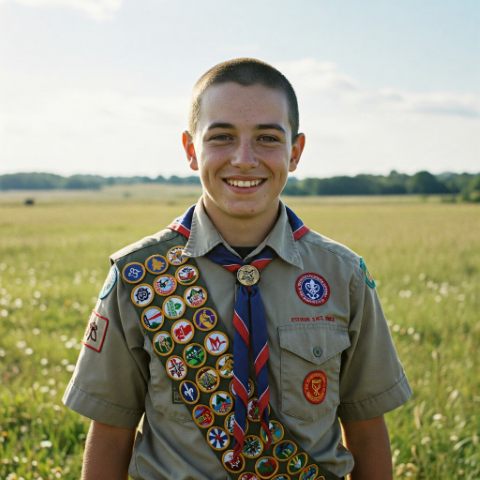
Hi, Robin here, A former lead Scout and here I share my inspiring stories about USA Scouts, leadership, adventure, how to guides and more.


